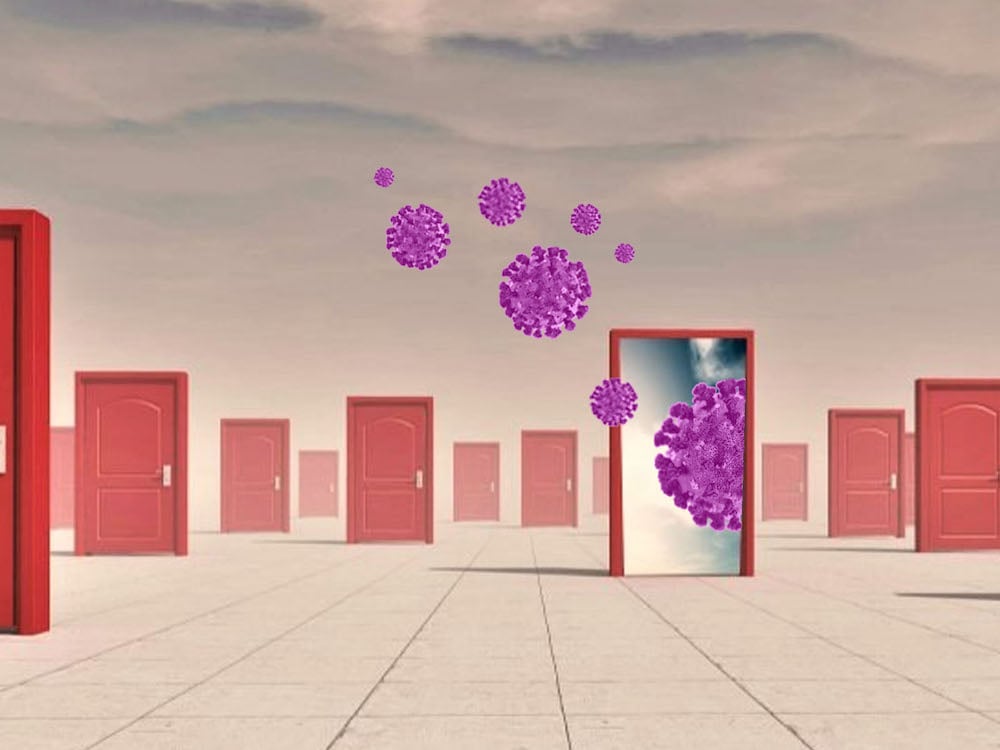You might’ve noticed that the New York Times started publishing a pandemic survival guide called At Home. It has articles about the perfect work onesie, cooking steak Diane and the best content to watch on Disney+.
It’s a far cry to those for whom survival might be better wages, adequate housing or the need to sacrifice something precious in order to make ends meet.
Stay home, the authorities told us in March. If you have to go out, keep six feet. Be careful when touching things.
The problem: most of the country can’t even follow health guideline number one. I checked the numbers and Statistics Canada told me that the work from home crowd is only 40 per cent of Canadians.
It really shouldn’t be a surprise that health recommendations are not one-size-fits-all. Yet last year many groups found themselves left out of mainstream messaging.
In the first month of the pandemic, Erica told me about the washroom she shares with her floor in an East Hastings single-room occupancy hotel. It did not have soap or hand sanitizer. She’d bring her own, and even bought ingredients to make sanitizer for her neighbours.
I also checked in with Stanley, a writer I admire who sells recyclables for a living. Be careful when coming into contact with contaminated surfaces, Dr. Bonnie Henry had said, to which Stanley quipped, “I don’t know if you know, but when we’re binning, we’re touching garbage.”
Stanley has been homeless since 2004, and for him and his peers in those early weeks, there was nowhere to rest in the daytime. The McDonald’s he frequented was closed. The security guards in his neighbourhood were picky about homeless people loitering in the shelter of office buildings, even though they were closed. When I met him one April afternoon, he found a vacated restaurant patio, which came with what he had been looking for: an outlet for him to charge his computer.
Yes, the public health recommendations of bunkering and battening down sound simple, but I wondered about all the people who might not be able to — as the Times seems to suggest — stay at home curled up in the perfect onesie, clocking their work hours on Zoom.
More than ever, I felt like Metro Vancouver is home to parallel cities.
Documenting stories, I had the privilege of hearing from frontline workers that Vancouverites might not have been thinking of when they came up with their 7 p.m. ritual of cheering on #HealthcareHeroes.
Kulwant the taxi driver told me about driving throughout the pandemic. At the beginning, his passengers were doctors, nurses, construction workers and sex workers. Kulwant gets the occasional senior, and still holds their hand if they need help getting into the cab. “Yes, it’s scary,” he said, “but you have to do your job.” Though if he’s driving, it means he can’t visit his new granddaughter.
Cleaners like Vilma make safe all the buildings that people still visit and there’s more work to do than ever. She has diabetes, and is extra worried about catching the coronavirus. Her husband’s work hours have been cut by half. For Vilma, her commute to cleaning a BC Hydro office in Burnaby is a 20-minute SkyTrain ride, the most stressful part of her day. She told me, “I cover myself from head to toe — and it’s hot!”
There is an abundance of “What the Pandemic Has Revealed About...” pieces, but experts I’ve interviewed this year on disparities that have worsened in B.C. told me none of it is a surprise or a secret.
Two years ago, I crunched census data to find out who lives in our richest and poorest neighbourhoods.
Lo and behold — the richest were the most convenient parts of our region in and around Vancouver’s downtown, where educated residents can enjoy commutes on bike and foot. The poorest are farther out in the suburbs, home to a higher percentage of newcomers, public transit users and blue-collar workers who can’t do their jobs from home.
Come COVID-19, it’s no surprise it’s the latter that are most exposed to the virus or have to take on the most risk to make ends meet.
At the time I spoke with David Hulchanski, the University of Toronto professor well known for researching urban inequality in Canada. He told me that these disparities are not the result of disasters like an earthquake or a tsunami. In our current state of emergency, I think we can add a pandemic to the list.
“We did this,” he told me. “This is public and private power doing these things to the city.”
In our recovery towards a “new normal,” let’s make sure it’s not like the old one. ![]()
Read more: Coronavirus

















Tyee Commenting Guidelines
Comments that violate guidelines risk being deleted, and violations may result in a temporary or permanent user ban. Maintain the spirit of good conversation to stay in the discussion.
*Please note The Tyee is not a forum for spreading misinformation about COVID-19, denying its existence or minimizing its risk to public health.
Do:
Do not: